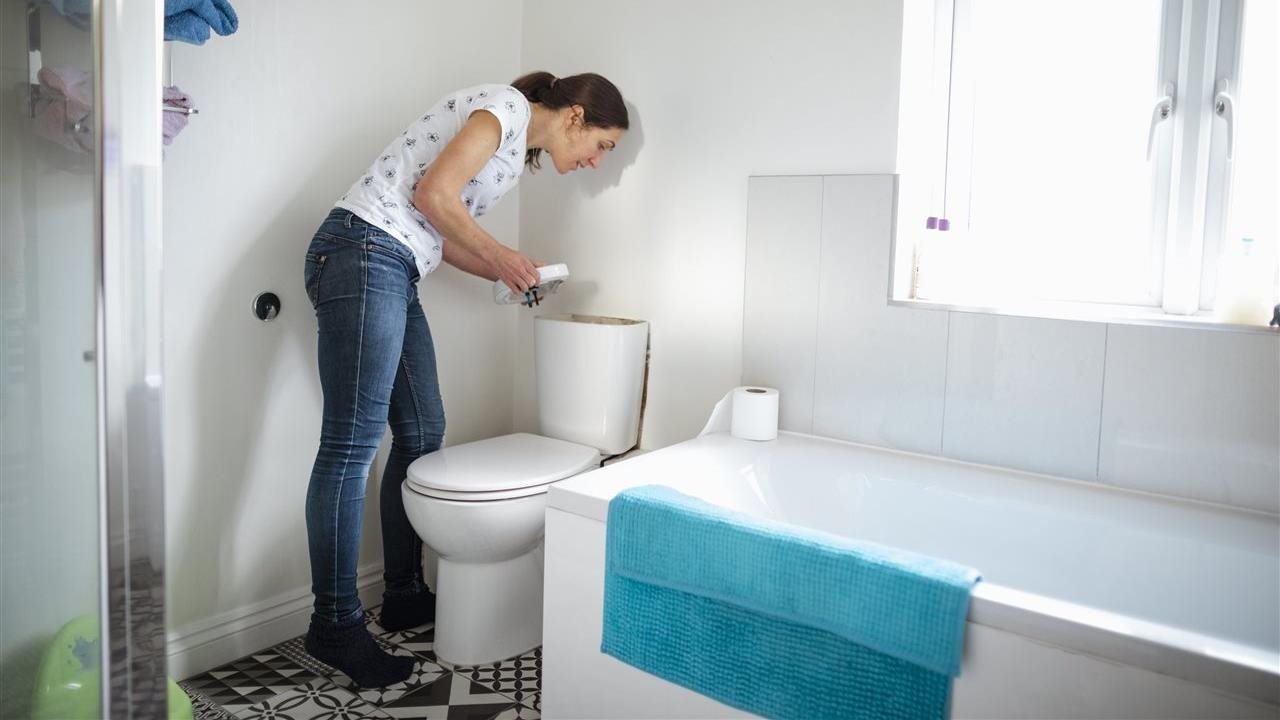
(BPT) – Although your toilet requires regular maintenance to keep things flowing the right way, many of us don’t know the basics of taking care of the porcelain throne. Luckily, learning how to take care of your toilet is as easy as following a few simple tips, stocking up on the right products and finding a great plumber to step in when you need them.
Roger Wakefield, LEED AP, Green Certified Master Plumber, has more than 40 years’ experience and shares five plumbing tips on how to care for your bathroom as a homeowner.
Tip #1: Know how to fix a clog
What many people don’t realize is that you don’t always need to be a plumber or have special tools to fix a toilet. If you want to avoid a clog, don’t fear! Take the lid off the toilet tank, turn off the water and pour a half gallon of vinegar into the flush valve (where the flapper sits) and let it sit for 30 minutes. It’s going to fill the rim, clean and break down the hard water buildup to wash it out. Turn the water back on and flush it. It should flush much better.
Tip #2: What is flushable?
Although many wipes look the same, wipes are created differently, and many are not meant to be flushed. Many people flush disposable cleaning wipes, baby wipes or other wipes that do not break down after flushing and can wreak havoc on your pipes. This is why I only recommend Cottonelle Flushable Wipes because they contain fibers that are 100% biodegradable, plastic free and designed to immediately start to break down in water. That means you can flush them away without worry. They are currently the only wipe approved by Wastewater Utility as being safe to flush. In addition to being approved for flushing, they also contribute to a refreshingly clean routine alongside your toilet paper.
Tip #3: Make sure you check before you flush
Check the label before you flush and ask yourself “Is this flushable?” Cottonelle Flushable Wipes are septic safe and this is indicated on the packing. Forensic studies by sewer agencies show at least 98% of materials collected from treatment plant screens were baby wipes, hard surface cleaning wipes, paper towels, tampons and other hygiene products labeled “Do Not Flush.” Just one minute of reading can save you tons of money.
Tip #4: Replace old pipes
So many issues can be traced back to outdated piping materials, which is why I always tell my clients, and potential homeowners, to learn when the piping was installed. If you live in a home that was built before or even during the ’70s and ’80s, I recommend inspecting and possibly replacing cast iron, steel and lead pipes. All of those materials can corrode and break over the years, causing many costly repairs in your future. Also, if you have polybutylene water lines, keep an eye on your water bill as the cost could help indicate a potential leak.
Tip #5: Embrace the double flush
In addition to being more mindful of what you’re flushing down the toilet (e.g., flushing non-flushable wipes), you may need to use a “double-flush.” That can mean flushing once before throwing toilet paper or flushable wipes in the bowl, and then flushing again to ensure the materials have gone down the drain. Another preventative measure is addressing a weak flush or slow drain immediately. The situation probably won’t get better by doing nothing so either check it out and clear it yourself or call your plumber.
Keeping your toilet and pipes clear can save you from lots of trouble later. For more information on the importance of using the right wipes for your toilet, visit Cottonelle.com/Flushability, follow on social and follow Roger Wakefield on Instagram, Twitter, Facebook and TikTok.
